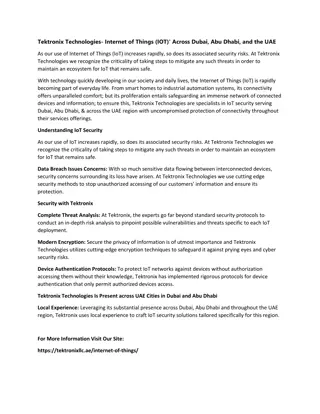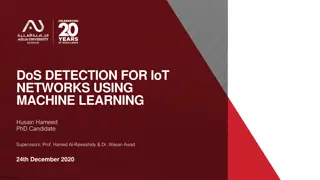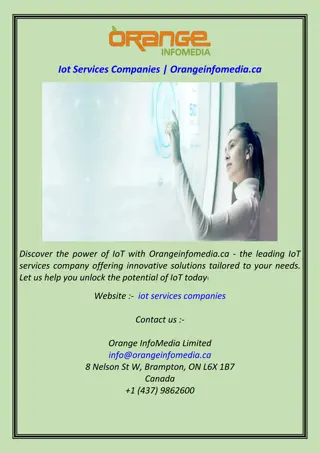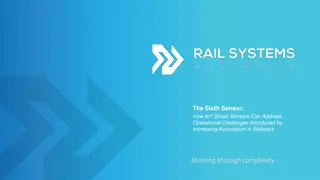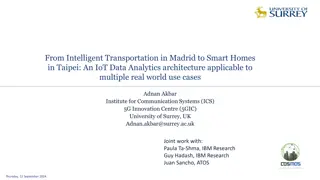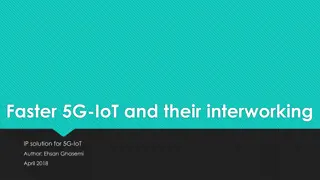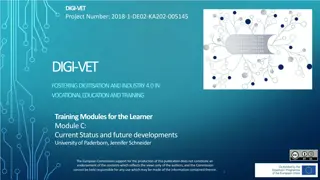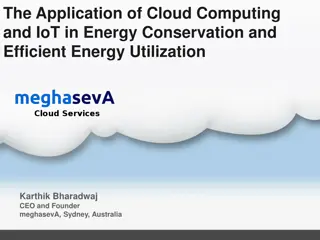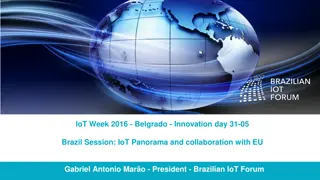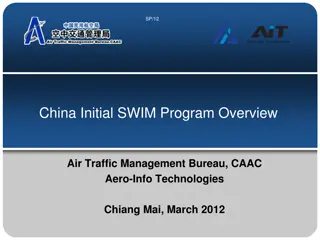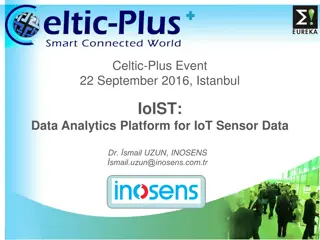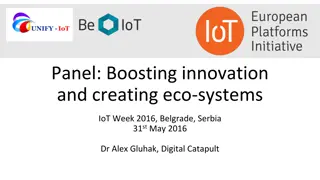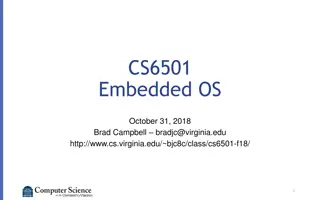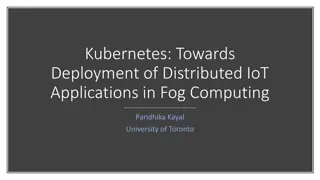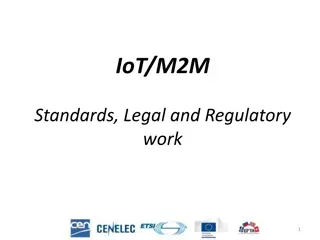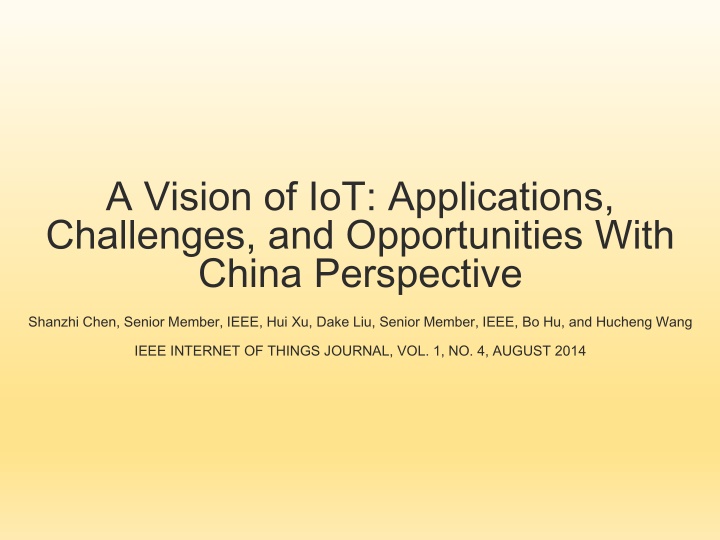
A Vision of IoT: Applications, Challenges, and Opportunities in China Perspective
The Internet of Things (IoT) is an intelligent network connecting all things to the Internet. This article delves into the goals, definitions, characteristics, and capabilities of IoT, as well as the challenges it faces. It also explores the development of IoT in China, highlighting key milestones and advancements in the field.
Download Presentation

Please find below an Image/Link to download the presentation.
The content on the website is provided AS IS for your information and personal use only. It may not be sold, licensed, or shared on other websites without obtaining consent from the author. If you encounter any issues during the download, it is possible that the publisher has removed the file from their server.
You are allowed to download the files provided on this website for personal or commercial use, subject to the condition that they are used lawfully. All files are the property of their respective owners.
The content on the website is provided AS IS for your information and personal use only. It may not be sold, licensed, or shared on other websites without obtaining consent from the author.
E N D
Presentation Transcript
A Vision of IoT: Applications, Challenges, and Opportunities With China Perspective Shanzhi Chen, Senior Member, IEEE, Hui Xu, Dake Liu, Senior Member, IEEE, Bo Hu, and Hucheng Wang IEEE INTERNET OF THINGS JOURNAL, VOL. 1, NO. 4, AUGUST 2014
Introduction The IoT is an intelligent network which connects all things to the Internet. Goal: 1. Intelligent identifying 2. Locating 3. Tracking 4. Monitoring 5. Managing things
Introduction The IoT is an intelligent network which connects all things to the Internet. Goal: 1. Intelligent identifying 2. Locating 3. Tracking 4. Monitoring 5. Managing things
IoT Definitions Organizations Organizations CCSA Definitions Definitions A network which can collect information from the physical world or control the physical world physical world objects through various deployed devices with capability of perception, computation, execution and communication, and support ommunications between human and things or between things by transmitting, classifying and processing information. A global infrastructure for the information society, enabling advanced services by interconnecting(physical and virtual based on existing and evolving interoperable information and communication technologies. A global network infrastructure, linking physical and virtual objects through the exploitation of data capture and communication capabilities. A world-wide network of interconnected objects uniquely addressable based on standard communication protocols. ITU-T EU FP7 CASAGRAS physical and virtual)things physical and virtual objects IETF
IoT Characteristics Comprehensive Perception Reliable Transmission Intelligent Processing
Capability of the IoT Application 1. Location Sensing & Sharing of Location Info 2. Environment Sensing 3. Remote Controlling 4. Ad Hoc Networking 5. Secure Communication
Challenge of IoT Architecture Challenge Technical Challenge Hardware Challenge Privacy and Security Challenge Standard Challenge Business Challenge
IoT in China 1999 - Iot sensing network research started. 2010 March - IoT was positioned as one of the strategic emerging industries and written into the government work report. 2012 - national 12th Five-Year Plan including IoT development (2011 2015)
China 5 key project Innovation project Standardization acceleration Project 10 Industrial sectors & 100 New Enterprises Industry Development Pioneering Project Application Demonstration Projects in Key Sectors Public Service Platform Construction Project
Standardization An open and generic IoT architecture is an integrated solution with interoperability. It will have the following characteristics: 1. Standard Interface and Protocol 2. Public and Operating 3. Open, Scalable, and Flexible
CCSA general architecture 3 layers: 1. Application layer 2. Network layer & business layer 3. sensing layer
Sensing and Gateway Platform This platform connects sensors, controllers, RFID readers, and location sensing device (e.g., GPS) to IoT network layer. IoT terminal, IoT gateway, and tip node includes: 1. Common interface module : collects physical interfaces of various sensors into a common interface. 2. Common control module : connect sensors, controllers, GPS, and RFID readers with a common connection protocol. 3. Common connection protocol
Resource and Administration Platform backbone networks 3G, 4G, internet, optical fiber network, Ethernet network, satellite networks, and private network. resource administration platforms data processing, data storage, security management, and application supporting.
Open Application Platform Modularization design in this application platform provides common function and open application programming interface (API).
Deployment of Typical Applications Smart City 1. the stage for initial infrastructure construction; 2. the stage for data-processing facility construction; 3. the stage for end-phase service platform construction Intelligent Transportation electronic police, intelligent traffic signal control, traffic video monitoring, intelligent Taxi service management, urban public transport information technology, and ETC.
Deployment of Typical Industry Applications 1. Intelligent Coal Mine
Deployment of Typical Industry Applications 2. Intelligent Oil Field
Prospect of IoT Interoperability Intelligent System Energy Sustainability

